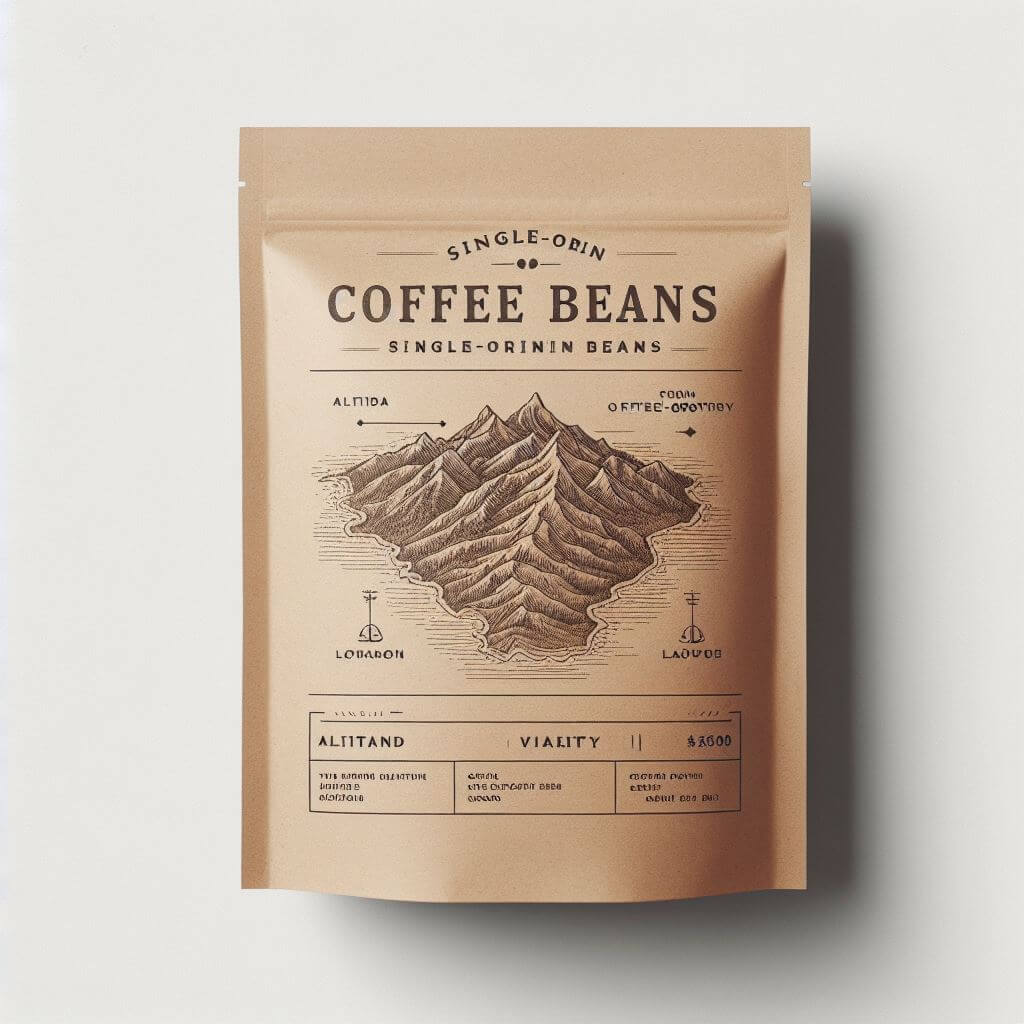
Single-origin coffee is exactly what it sounds like coffee that comes from a specific place. It can be a whole country or as narrow as one farm. The beauty of single-origin coffee is its traceability and unique flavor profiles specific to certain geographic regions. When you buy single-origin coffee, you can point to a map and say, “My coffee is from here,” and something is amazing about that connection.
One of the key aspects of single-origin coffee is its consistent flavor that reflects its unique place of origin. This consistency and difference in taste is largely due to a process called terroir, a French term used primarily in the wine industry. Terroir refers to the environment in which coffee is grown, including the soil, topography, and climate that give coffee its characteristic flavor. For example, Ethiopian coffee is known for its floral and citrus notes, which is largely due to the high altitude and dry weather in regions such as Sidamo and Irgacheffe.
The processing method used after the beans are harvested also plays an important role in shaping the final flavor profile of the coffee. Coffee beans can be washed, dried naturally, or treated with honey, each method affecting the acidity, texture, and overall flavor of the coffee. For example, washed beans typically have a cleaner, more refined flavor, while natural or dry processing often results in a fuller body and a sweeter, more complex flavor.
Single-origin coffees are often more expensive than their blended counterparts, but for good reason. The care and attention required to grow and harvest single-source coffees, combined with typically smaller yields and the unique characteristics of each crop, contribute to a higher price. Additionally, farmers and growers can focus on quality rather than quantity because they have a direct channel to markets that value and appreciate the distinctive flavors and stories of their coffee.
Importantly, since each single-origin coffee comes from a specific area, the beans have seasonal variations. This means that coffee can vary from one year to the next, depending on factors such as weather conditions and farming practices, just as a good wine can vary from one invention to another. This diversity adds an exciting element of discovery and anticipation for coffee enthusiasts eager to experience subtle differences and new taste sensations with each new vintage.
Why Single Origin Matters
The appeal of single-origin coffee covers important ethical and environmental considerations that are increasingly important in today’s global coffee market. The transparency offered by single-origin coffee ensures that consumers know exactly where their coffee comes from, which promotes a closer connection between consumers and producers.
Single-origin coffee often comes from small farms or individual cooperatives, and purchasing such coffee can lead to better economic outcomes for individual farmers. By focusing on a single source, roasters can establish direct trading relationships with producers, bypassing traditional procurement channels that often put the lion’s share of profits in the hands of middlemen. This means that more money goes directly to the coffee producers, who can then invest in their communities and improve the quality of life of residents. It also encourages farmers to focus on quality rather than quantity, knowing that there is a market that appreciates the exceptional characteristics of their coffee.
From an environmental perspective, single-origin coffee can contribute to more sustainable practices in agriculture. Since the characteristics of single-origin beans are highly dependent on the environment, there is a natural incentive for farmers to maintain or improve their local ecosystems to improve coffee quality. This could include adopting organic farming methods that forgo harmful pesticides and fertilizers, conserve water, and preserve local forests, which will benefit not only the coffee but also the region’s biodiversity.
Single-origin coffee contributes to biodiversity. Unlike some large coffee farms that may grow only one type of coffee plant, smaller single-origin coffee farms often grow multiple varieties of coffee and other crops, contributing to a healthier ecosystem and reducing the risk of crop loss due to pests or disease.
From a consumer perspective, the value of single-origin coffee extends to the realm of education and appreciation for the global coffee community. Consuming single-origin coffee exposes consumers to the diverse flavors and stories of coffee from around the world, enriching their understanding and appreciation of different cultures and the unique challenges they face in coffee production.
How To Choose And Enjoy Single-Origin Coffee
When choosing a single-origin coffee, first consider the region it comes from and the typical flavor profiles associated with that region. Coffee-growing regions around the world are generally divided into three broad categories: Africa, Latin America, and the Asia-Pacific region. Each region gives its coffee a special taste:
– African Coffee – Often known for its fruity and floral notes, coffee from Ethiopia or Kenya can provide bright acidity and aromatic flavors ranging from citrus to berry.
– Latin American coffees – They usually have a balanced taste with good structure, crisp acidity, and flavors that can include nuts, chocolate, or a light sweetness. Colombian and Guatemalan coffee are prime examples.
– Asia-Pacific Coffees – usually full-bodied and lower in acidity, these coffees often have an earthy, herbal, and sometimes spicy finish, as seen in Sumatra or Papua New Guinea coffees.
The level of roasting can dramatically change the natural characteristics of coffee. Light roasting tends to preserve most of the beans’ original flavors, allowing the region’s distinctive features to shine through. They are usually preferred by those who want to explore the nuances of taste characteristic of the coffee’s origin. A medium roast provides a nice balance between inherent flavors and the influence of the roast, suitable for those who enjoy a hint of roast without overpowering the original bean notes. Dark roasted beans, while popular for their bright and robust flavor, can mask some of the beans’ unique characteristics, but are preferred for their texture and strong bitter notes.
The freshness of the coffee beans is key to determining the taste. Freshly roasted beans will offer the most dynamic and bright taste. Ideally, coffee should be consumed within a month of the roast date to ensure optimal freshness and flavor. When buying coffee, pay attention to roasters that indicate roasting dates on the package. Plus, buying whole beans and grinding them just before brewing can make for a fresher, more flavorful cup.

